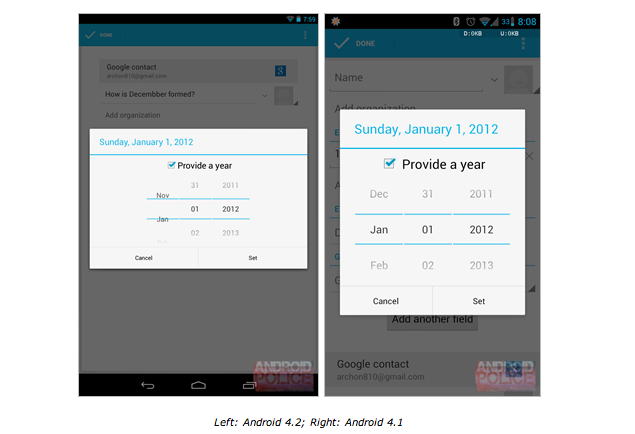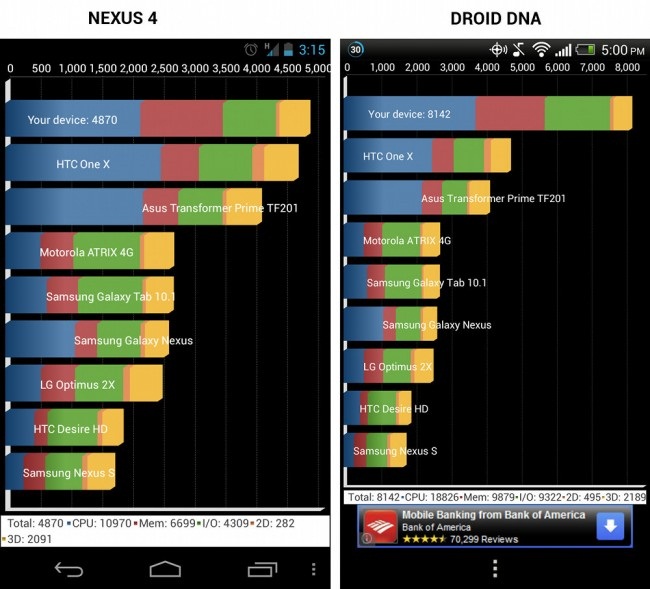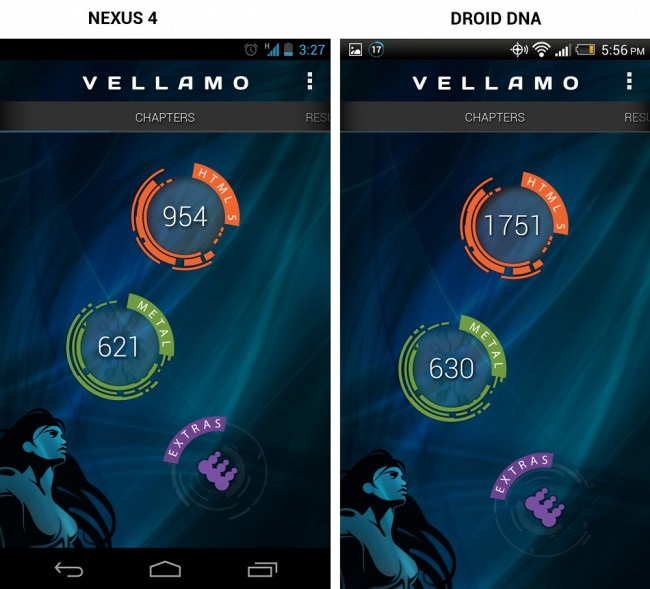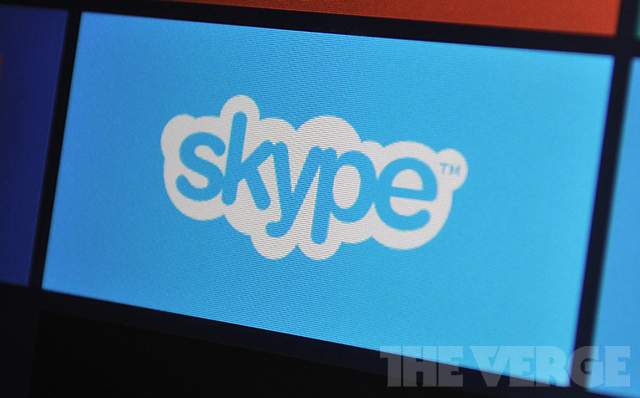Before we go into more detail on
HTC's Desire X, cast your memory back to a time before the outfit announced the "One" line of Android phones. You may remember names such as
Wildfire,
Sensation,
Rhyme and, of course, Desire. Likewise, you may also remember a certain amount of company talk about its plans to
simplify its Android offerings,
and turn out phones at a slower, more considered pace. So, it was a
little confusing when we first heard about the Desire X. HTC already had
an affordable phone,
the One V, but seemingly deemed it not affordable enough -- and
the Desire C
already fills the most entry-level position. With a 1GHz dual-core
processor, a WVGA (800 x 480) display and a 5-megapixel camera, the
specs are from the same era as the OG Desire, but with a slightly more
current price: €299 in Europe. So, stripped of any "One" branding, but
bearing a name that many will remember fondly, is the Desire X a good
phone that's been reinvented, or just a throwback from HTC of old? We
spent some time in its company to find out for ourselves.
Hardware
If you examine the spec sheets of the original Desire
and the Desire X, you'll see that in the two years or so that separate
them, the screen has grown from 3.7 to 4 inches (capacitive buttons are
still present on the X); there's 768, rather than 512MB of RAM; and the
5-megapixel camera resolution has remained the same. The clock speed
hasn't changed either, but you're getting an extra core this time with
the Qualcomm MSM8225 Snapdragon chipset. Not everything is looking back
to the past, though.
The perimeter to the camera is made from ridged plastic that almost feels like a cut-out from a vinyl record.
The phone's overall design takes some cues from the One line, which
gives it a modern look and feel. Starting at the back, the removable
battery cover has a matte, almost soft-touch finish, save for a plastic
section surrounding the camera lens and LED flash. The perimeter of the
camera is made from ridged plastic that almost feels like a cut-out from
a vinyl record. Beneath this is an HTC logo embossed at 90 degrees, and
a Beats audio badge along the base. To the left of this branding are
some tiny drilled holes that cover the speaker. This rear shell also
contains holes for the headphone jack, micro-USB port and mic, as well
as the power / stand-by button and volume rocker. There isn't, however,
an ingress for you to slip a fingernail under if you wish to remove it;
instead you'll have to work something into the gap where there's a touch
more leverage (mainly around the top). The bonus here is that it makes
the phone look like one solid unit. The downside is that getting under
the hood is a clumsy undertaking. Once you've found your way in, though,
you'll find a 1,650mAh battery, plus full-size SIM and microSD slots.
It's when you find your way back to the front of the device that its
family lineage is most apparent. Aside from the tiny drilled speaker
holes up top, and the Android 4.X-flavored capacitive buttons along the
bottom, the resemblance to the
Desire S
is strong. There's the familiar two-tone bezel at the bottom, where the
brushed-finish fascia presses itself next to the matte detail cover
reaching around from the back, meeting on the phone's distinctive family
chin. As you work upwards around the edges, that brushed finish carries
on up the sides, and flanks the gloss black of the frame around the
display with sharply cut edges. These edges are actually sharp enough to
become uncomfortable with prolonged, firm gripping.

It's that 4-inch super LCD display that is probably one of the more
surprising elements of the phone. With a rather average 800 x 480
resolution, you might not be expecting much. But the non-PenTile screen
is laminated, reducing glare and making colors really bright and vivid.
That, in combination with the not overly large size means that, while
there might be more pixel-dense displays around, what you're getting on
the Desire X doesn't appear to be low-quality, or second-rate. Whites
appear untainted and clear, but blacks render a little bright, with
light coming through and a subtle bluish tone throughout. It's not to
the point of distraction we must add, but it's noticeable when put side
by side with another handset (a Galaxy Nexus or Acer CloudMobile, for
example). You'll be pleased to hear that the vivid image reproduction
also doesn't come at the expense of overbearing contrast levels either,
with photos and videos appearing to have similar levels to viewing the
same file on a desktop.
The Desire X's radio will tune in to GSM /
EDGE (850/900/1800/1900) and HSPA+ (900/2100), but there's also
Bluetooth 4.0, GPS and single-band 802.11b/g/n plus support for DLNA.
The built-in media player has a feature that will let you "select a
player" for sharing with compatible devices. We tested this with a
Samsung SmartTV on the same WiFi network, and the phone found it
instantly. Once selected, the video we chose started playing, without us
even touching the controls on the TV once. A little bit brutal perhaps,
but it works.
Camera
There's only one camera to concern yourself with here, and that's the
5-megapixel shooter on the back. It comes with HTC's dedicated ImageChip
/ BSI sensor, has an f/2.0 aperture and 28mm lens. There's autofocus,
which seemed quick and responsive for photos (less so for video), but
you can tap to focus too, should you want something in particular to get
more attention -- or if the phone doesn't get there itself (this never
happened to us in our tests).
If you
like to meddle with your pictures a little once you've taken them, the
vintage, sepia, vignette effects et al are still here to help you get
your filter fix.
In the camera app itself, there are the
same features that we've seen already on other phones with Sense 4.0.
That means you get the ability to take stills while shooting video, and
continuous shooting mode, just by keeping your finger down. The latter
of those two features works pleasingly well, with images firing off
quickly, popping up in the gallery right away. The settings, flash and
"mode" menus remain on screen at all times, and let you jump to HDR,
Panorama or any of the other scene presets (landscape, close-up and so
on) with ease. If you like to meddle with your pictures a little once
you've taken them, the vintage, sepia, vignette effects et al are still
here to help you get your filter fix.

As for the pictures themselves, we found them to be generally pleasing,
with good low-light performance in HDR mode. Not everything was quite
as sharp as we'd like when we were shooting at night in Auto mode, and
colors were sometimes prone to looking washed out. But in more ideal
conditions (say, a brightly lit room, with a static target) you'll
definitely be able to produce some satisfactory shots.
As for the
video side of things, there's no HD shooting, sadly, with resolution
still maxing out at WVGA, or 800 x 480. We took a few sample clips, as
you'll see below, it's a fairly far cry from some of the more
pixel-dense / 720p competition (this is one of the specifications where
the One V wins out), you can still capture some serviceable video that'd
be okay for sharing with friends, or for casual YouTube memories, but
for more important memories, you'll be wanting to use something else.
Software
Somewhere under that Sense UI, is Android 4.0. So, we're not all that
far behind in terms of core software. And, while it's not been confirmed
that the Desire X will get Jelly Bean, it's also
not been ruled out -- unlike the Desire C and the One V,
both of which miss out after HTC claimed they don't have enough RAM.
Those not coming from an Android background at all will likely find it an easy in-road to the operating system's universe.
As for that slathering of Sense, well, we already made our thoughts on it pretty clear
in our review,
but to recap, it's a clear improvement over previous incarnations.
Rather than rake over the same likes and dislikes as before, we'll look
at it from the perspective of the Desire X. The first thing to mention
is that, while the UI generally feels cohesive, and blends in well with
Android's native features, if you
are used to stock Ice Cream
Sandwich, Sense might slow you down at first. That's especially true on a
phone such as this where there's relatively less processor punch (more
on this later). If, on the other hand, you're migrating from other
skinned versions of Android, or older iterations of Sense, then you're
probably going to feel at home. Those not coming from an Android
background at all will likely find it an easy in-road to the operating
system's universe. Menu options are generally intuitively located, and
features such as the lock screen widgets help it feel modern.

There are some simple tweaks that we really enjoy, too, such as the
mini-weather widget that appears in the calendar showing you how each
day in the near future is expected to turn out, and the 3D rotating home
screens add a little contemporary flavor. As already mentioned, those
quick shortcuts from the lock screen will be a great time saver for many
too. One minor quirk we noticed was that notifications for email took a
long time to clear if, for example, you deleted new mail on a different
device. You might think more messages have arrived and then check the
phone, only to find it's the message you deleted nearly an hour ago.
One last software feature that's worth mentioning is Beats audio mode. The collaboration between HTC and Dre's headphone brand
has been going on for some time now, and has received
mixed responses.
The Desire X even has a Beats logo on its backside, so we thought we'd
give it more than just a quick listen. We set some music playing, and
then piped it through a PC, recording sections with Beats enabled, and
again with the feature switched off. Our main takeaway? Beats makes
things loud. Very loud. We wanted to see a little bit more of what was
going on, so we inspected the waveform, and put a spectral analyzer on
the track to see the changes in sound in real time, both are in the
image below.

As you can see, in the lower section it's instantly clear when Beats is
activated (the thick part of the wave) and when it isn't. This
thickness represents volume, and a good few decibels of it, too (around
four to five). The top part shows a snapshot of the signal. The lower,
stronger line is without the feature, and the taller, fainter one is the
curve when Beats is on. It's pretty clear that there are big boosts
around 100Hz and below (bass) and 1kHz (mid-high) ranges. This
represents a curve you might introduce with a multi-band EQ on a home
stereo if you wanted to crank up the bass, and balance with some
"sparkle" higher up the spectrum. In short, it's juicing up the sound in
a very similar way to other equalizer presets on other players. Great
if you like it loud.
In short, it's juicing up the sound in a very similar way to other equalizer presets on other players.
Performance and battery life
When we first got our hands of the Desire X
back at IFA
we weren't terribly impressed with its performance. In the short time
between then and now, very little has changed. Users coming from older,
lesser-specced phones might find this a bit of a treat, but if you've
used anything with a little more processor muscle, it can feel a touch
slow. Navigating screens and flicking through menus has that slight feel
of a pro sports player that's seen better days. Quick, it but won't
nudge out the competition. The 1GHz dual-core Snapdragon S4 8255 and
768MB RAM are going to hold out for now, but if you're entering into a
two-year contract, be aware that it might feel outdated long before your
upgrade appears on the horizon.

We spent a lot of our downtime thumbing at a range of casual games, and
there's certainly nothing bad to report here, though it's not a device
we'd recommend for anything more graphically intense. In our general use
(i.e., outside games) we did experience the occasional flicker and
screen glitch. Not all day, or all the time, but perhaps once or twice
throughout the morning we'd catch it when changing between apps. When we
repeated whatever we were doing in hope of reproducing the glitch, it
never occurred twice in close proximity. To get a better idea of the
phone's strong and weak points, we put it to the benchmarks to decide,
as you can see below.
| | HTC Desire X | Samsung Galaxy Beam | Sony Xperia U |
| Quadrant (v2.0) | 2,682 | 2,764 | 2,125 |
| Vellamo (v2.0) | 1,147 | 684 | N/A |
| AnTuTu | 4,938 | 5,250 | 5,348 |
| SunSpider 0.9.1 (ms) | 3,448 | 2,391 | 2,696 |
| GLBenchmark 2.5 1080p Egypt Offscreen (fps) | Wouldn't run | Wouldn't run | N/A |
| CF-Bench | 5,460 | 5,138 | 5,346 |
| SunSpider: lower scores are better. Xperias were tested on GLBench 2.1 and Vellamo 1.0, which are now obsolete. |
So, it's a mixed bag as far as numbers go, which roughly reflect our
anecdotal experience, too: generally good, with the odd glitch in
performance. As for the battery, with a 1,650mAh cell under the hood,
and some potential savings to be made from the smaller screen, it
managed a reasonable six hours and 33 minutes in our standard video
rundown test (WiFi on, but not connected, and brightness fixed at 50
percent). In real-world use, we'd get well into the following day before
we'd start getting nervous about finding a power point. If you're the
sort that switches off overnight, then it might even last a full two
days with moderate use.
We already mentioned some aspects of the
audio, but not everything is all about the Beats; you may also want to
make the odd phone call or two. And if you do, then you'll enjoy them
just fine. Voices sounded clear and crisp. As for data, again, we put
the HSPA+ radios to test at various places around London, and found
download speeds to be well within the normal range of what the O2
network had to offer in those areas (between 3 Mbps and 4 Mbps), with no
obvious breaks in connection or service.
Wrap-up
We liked the idea of HTC doing away with its confusing approach to
phone releases, and seemingly random naming convention (Sensation?
Explorer?). So, we're still a little curious as to why the Desire brand
lives on. The Desire C is much lower spec, but confusingly, the
low-but-premium One V gets bested by the Desire X on some key features
(notably RAM and number of processor cores). So, is it all about design
and build quality? Or old habits sneaking back in? Perhaps the Desire
name is just too intertwined with HTC's heritage for the company to give
it up fully. Whatever the reason, the Desire X exists.


 If you haven’t heard, HTC and Apple
If you haven’t heard, HTC and Apple












































